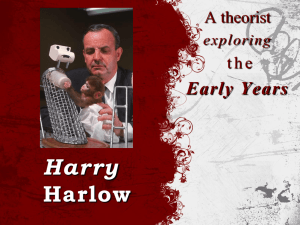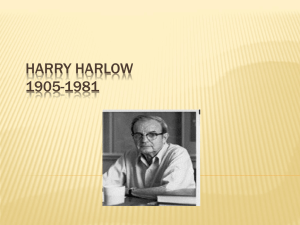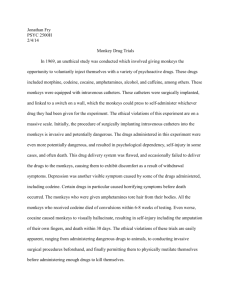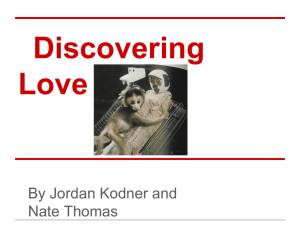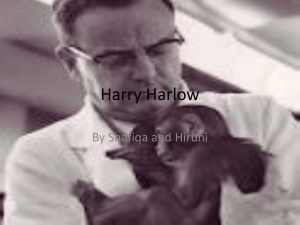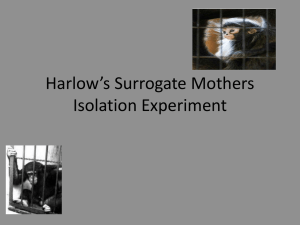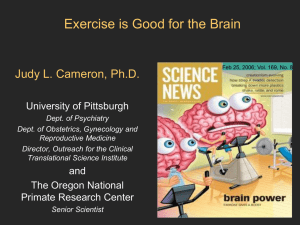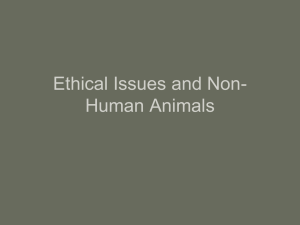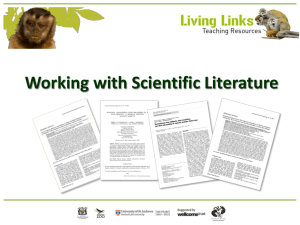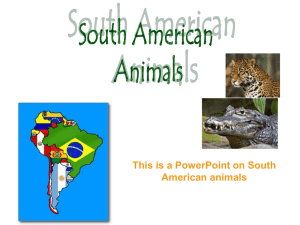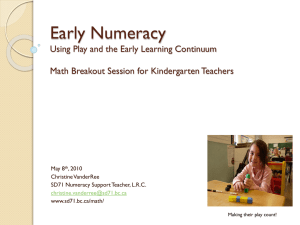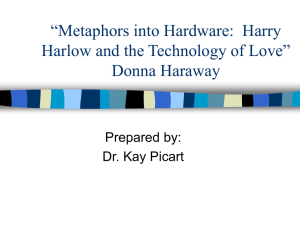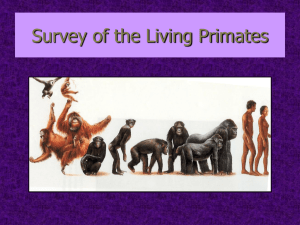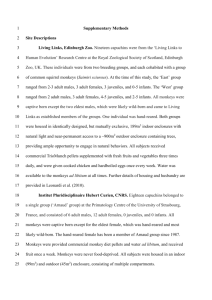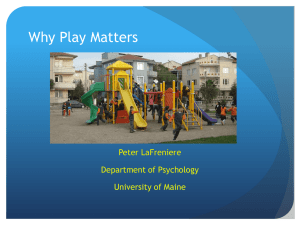Total Social Isolation
advertisement
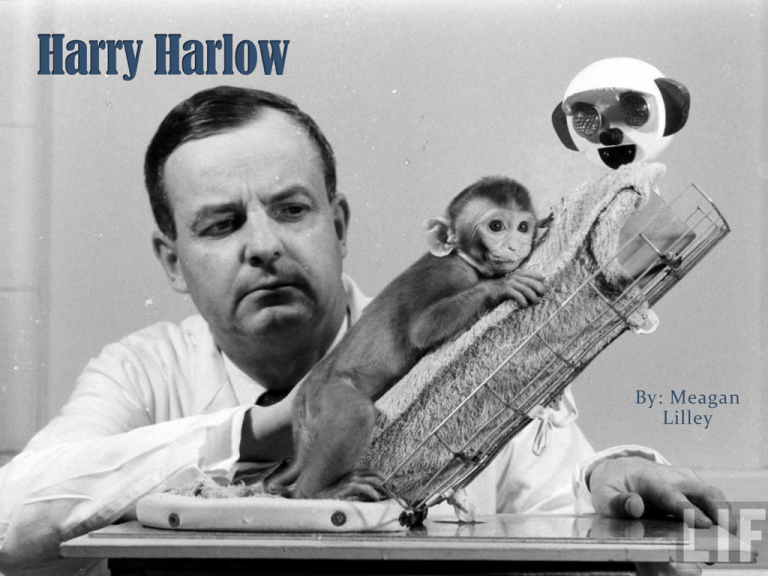
By: Meagan Lilley Was born on October 31, 1905 Originally named Harry Israel Grew up in Fairfield, Iowa Family was poor Spent a year at Reed College in Portland, Oregon Got into Stanford University on a special aptitude test. Spent a semester as an English major but then changed to Psychology Studied under Lewis Terman, who helped shape Harlow’s future Terman is also the one who advised Harry to change his last name Harlow took his father’s middle name Harlow married Clara Mears Terman’s daughter They had two children, which Clara took when she left him for being a “workaholic” He accepted a job as a professor at the University of Wisconsin persuaded the University to construct a Primate Laboratory His second wife, Peggy Kuenne, was a colleague in child psychology and together they had two children Harlow's motivation for his research was to understand love The maternal bond between mother and child was thought to begin through feeding Beginning in 1957, Harlow began to investigate the nature of this bond He removed infant rhesus monkeys from their mothers six to twelve hours after birth and raised them instead with surrogate mothers made either of wire or of wood covered with cloth First group = No food from Terrycloth Mother. Food from Wire Mother Second group = Food from terrycloth mother. No food from Wire Mother Even when the wire mother was the source of food and warmth, the infant monkey spent a greater amount of time clinging to the cloth surrogate These results led researchers to believe the need for closeness and affection goes deeper than a need for warmth The monkeys ran to the cloth mother for protection and comfort, no matter which mother provided them with food. Monkeys placed in an unfamiliar room without their cloth mothers would freeze in fear and cry, crouch down low, or suck their thumbs Monkeys placed in this situation with wire mothers showed the same behavior as the monkeys with no mother Once the monkeys could eat solid foods, they were taken from their “mothers” for 3 days When reunited, the monkeys tended not to venture off to explore as they usually did, but clung to their “mothers” Harlow claimed that the need for contact and comfort was stronger than the need to explore Even though the monkeys gained weight at the same rate, the monkeys with wire “mothers” had trouble with digestion Harlow realized that touch was not enough, and his "ideal mother" was inadequate When the now adult monkeys were introduced to normal monkeys they were extremely anti-social Displayed autistic-like behavior, banging their heads and rocking. They were also unable to mate normally “Rape Racks” “Motherless Mothers” The results contradicted the teachings of this time and the claim of the behaviorist school of psychology Harlow concluded that nursing strengthened the mother-child bond because of the intimate body contact that it provided Believed that contact comfort could be provided by either mother or father He presented his results Partial Isolation Monkeys were raised in bare wire cages Able to see, smell, and hear other monkeys, but no physical contact Resulted in blank staring, repetitive circling in their cages, and self-mutilation Total Social Isolation monkeys were raised in isolation chambers No contact at all with other monkeys. “Pit of despair” Baby monkeys were left alone for 3, 6, 12, or 24 weeks Resulted in severely psychologically disturbed monkeys Harlow tried to restore the monkeys who had been isolated for six months by placing them with normal monkeys Not successful Total social isolation for the first six months of life produced severe deficits in nearly every aspect of social behavior The monkeys that were isolated and then exposed to monkeys the same age who were reared normally were able to only obtain limited recovery of simple social responses Some monkey mothers reared in isolation showed maternal behavior that was acceptable when forced to receive infant contact over a period of months but showed no further recovery afterwards. Surprisingly, when six-month isolates were exposed to younger monkeys around three months old, they were able to pretty much complete social recovery for all the situations tested. Some researchers claim Harlow’s experiments as factors in the rise of the animal liberation movement The results of his work confirmed that human beings need more than just simple physical needs, like hunger we are social beings, seeking the warmth and comfort of touch, and the company of others Suggested the importance of mother/child bonding Children need to feel love, acceptance, and affection from the caregiver. He did not regret doing the experiments http://muskingum.edu/~psych/psycweb/history/harlo w.htm http://www.newworldencyclopedia.org/entry/Harry_ Harlow http://en.wikipedia.org/wiki/Harry_Harlow
